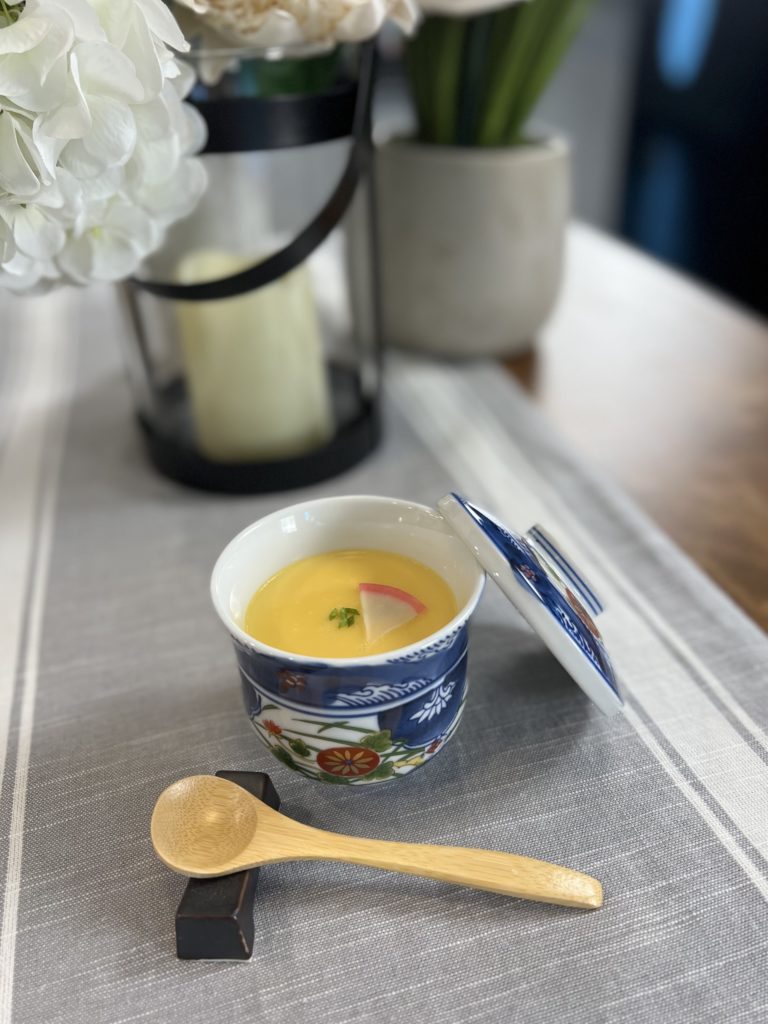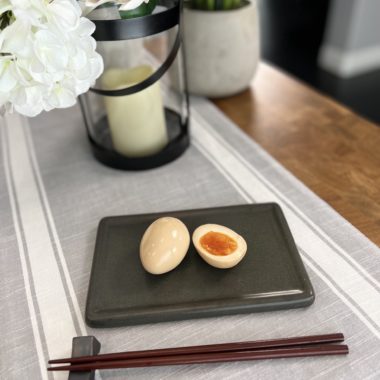Details
1
5 minutes
Overnight (6-8hrs)
Chawanmushi is deceptively simple – it’s two ingredients, after all, minus any mix-ins or garnishes. If you cook it at too high a heat, it’ll curdle into a scrambled-egg-in-broth thing. If you don’t cook it enough, it’s a raw, goopy mess. No wonder it’s served with pride at Japanese ryokans (inns) and traditional dining establishments. It takes practice to make it right.
Steamed egg custards are a very Asian dish in general, and different cultures make it differently. Korean and Chinese egg custards use less broth / liquid than Japanese chawanmushi, with different textures as a result. Chawanmushi (“steamed in a teacup”) is extremely delicate. It’s only lightly flavored, with the broth the egg is cooked in. No hot chili sauces or additional vegetables, possibly just a few sprinkles of chives (if at all). Try the Korean and Chinese versions too – each delivers a different experience and are equally delicious!
Chawanmushi can have variation in terms of whether or not there are mix-in ingredients. Some places will include shiitake mushroom, a single ginkgo nut, a small piece of shrimp, or a morsel of chicken. Super fancy places will serve it with crab and/or salmon. They’ll even top it with ikura (salmon roe) or even caviar. It can also be presented with no add-ons at all; concentrating simply on the broth and the egg.
Either way, chawanmushi is a simple dish. It’s absolutely light yet flavorful, and can be a perfect midday snack or breakfast dish. Enjoy it alone if you’re staying away from carbs. You can also enjoy it as part of a traditional Japanese meal. Just get a bowl of steamed white rice, some grilled fish or sashimi, some miso soup, and some pickles.
The texture, if cooked properly, is like the most delicate flan you’ve ever tasted – savory, of course. I have to try using my rice cooker for a sweet dessert custard. This method works so well for single portions!
For other Japanese egg-based dishes, try my Onsen Tamago and Ajitsuke Tamago (Ramen Eggs) recipes!

Ingredients
- 1 Egg
- Dashi broth
- A few chopped chives
- 1/3 Slice of kamaboko fish cake
Directions
Make your dashi broth ahead of time. If you’re using a dashi powder, use a coffee filter to strain out the powdery residue to make a clear broth. If you’re making the dashi from scratch or from a broth bag, you should have already strained the liquid as part of the broth-making process. You can also use chicken or vegetable stock, if fish stock isn’t your thing.
Measure the amount of liquid you will need for your teacup / chawan.
In a measuring cup, mix up one egg so the whites and yolks are fully combined.
Add enough liquid to make up the measurement from the teacup / chawan and mix with the eggs to create a watery egg / broth mixture. A rough estimate would be about 1 part egg to 2.5 – 3 parts broth.
Add the mixture to your teacup / chawan.
Slice a piece of kamaboko fish cake and some chives, and add to the mixture. If using a chicken or vegetable stock instead of dashi, you can substitute the kamaboko with some roast chicken, or simply just add the chive garnish.
To the inner bowl of a rice cooker, add water to the 1-serving mark.
Place the lid on the chawan, or use a small saucer or plastic wrap on your teacup.
Carefully place the teacup / chawan to the inner rice cooker bowl. The water should only come up half-way.
Start the rice cooker on the “Keep Warm” setting – overnight is best (6-8hrs). Do not use the “Cook” setting, as it will get too hot and curdle the custard.
Carefully remove the teacup / chawan from the rice cooker and serve as is.


